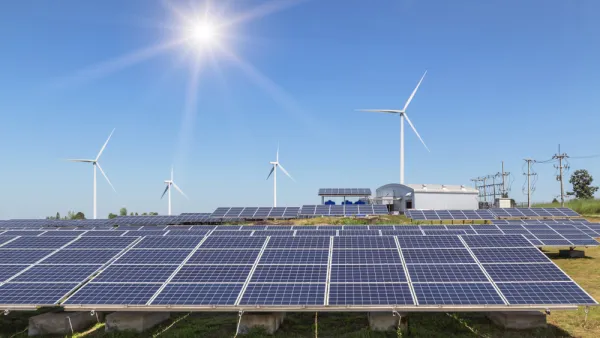A new report highlights the threat posed to a wide range of species by the extraction of fossil fuels in the United States.
The environmental costs of fossil fuel extraction and use are generally viewed in terms of pollution, specifically particulates and their impacts on public health, and GHGs and their contributions to climate change. A new report goes deeper by identifying specific species whose habitats are being devastated by the fossil fuel industries. According to the progressive news site CommonDreams,
"[A] new report [from the Endangered Species Coalition] highlights the destructive impact of fossil fuel consumption in the United States. The report, called Fueling Extinction: How Dirty Energy Drives Wildlife to the Brink, highlights the top 10 US species whose survival is most threatened by the development, extraction, transportation, and consumption of fossil fuels. Coalition members nominated species for inclusion in the report; submissions were then reviewed, judged and voted on by a panel of scientists.
Whether or oil exploration in the arctic (Bowhead Whale and Polar Bear), mountaintop removal and coal mining in Appalachia (Kentucky Arrow Darter and Tan Riffleshell), tar sands extraction in the US West and Canada (Whooping Crane and Wyoming Pocket Gopher), or western shale oil and gas development (Graham's Pentsemon and Sagebrush Lizard), the pattern holds. [As Mitch Merry at the Stop Extinction blog puts it] 'They're being driven closer to the edge of extinction by our nation's continued reliance on energy sources produced in the age of dinosaurs.'"
FULL STORY: US Thirst for Fossil Fuels is Decimating Nature's Wildlife: Report

National Parks Layoffs Will Cause Communities to Lose Billions
Thousands of essential park workers were laid off this week, just before the busy spring break season.

Retro-silient?: America’s First “Eco-burb,” The Woodlands Turns 50
A master-planned community north of Houston offers lessons on green infrastructure and resilient design, but falls short of its founder’s lofty affordability and walkability goals.

Delivering for America Plan Will Downgrade Mail Service in at Least 49.5 Percent of Zip Codes
Republican and Democrat lawmakers criticize the plan for its disproportionate negative impact on rural communities.

Test News Post 1
This is a summary

Test News Headline 46
Test for the image on the front page.

Balancing Bombs and Butterflies: How the National Guard Protects a Rare Species
The National Guard at Fort Indiantown Gap uses GIS technology and land management strategies to balance military training with conservation efforts, ensuring the survival of the rare eastern regal fritillary butterfly.
Urban Design for Planners 1: Software Tools
This six-course series explores essential urban design concepts using open source software and equips planners with the tools they need to participate fully in the urban design process.
Planning for Universal Design
Learn the tools for implementing Universal Design in planning regulations.
EMC Planning Group, Inc.
Planetizen
Planetizen
Mpact (formerly Rail~Volution)
Great Falls Development Authority, Inc.
HUDs Office of Policy Development and Research
NYU Wagner Graduate School of Public Service





























